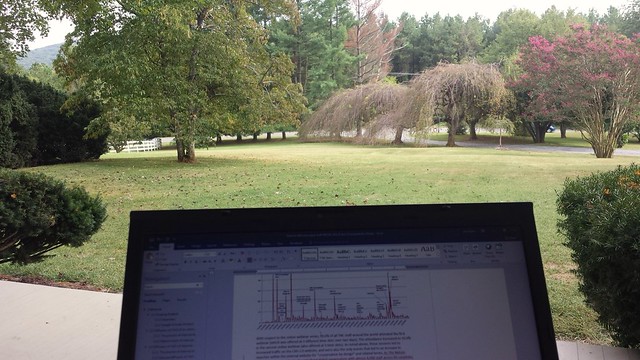
They are as follows (let me know if you want any abstracts):
UPDATE: published at http://www.tandfonline.com/doi/full/10.1080/01431161.2017.1327125
UPDATE: published: https://global.oup.com/academic/product/effective-conservation-science-9780198808985?cc=se&lang=en& and an ugly unformatted version is available at http://fish.freeshell.org/publications/DataNotDogma-Chapter11-preformatted.pdf
3. A paper outlining how we tied traditional detailed household surveys to spatial data by having farmers outline their actual plots on tablets with high resolution imagery (should be submitted in a few weeks, second author)
UPDATE: Has been submitted and rejected twice, both times after a 4-month review with only one reviewer. Submitted a third time.
4. A paper that was part of a water fund project in Brazil; a water treatment company is going to pay for conservation to reduce the costs of treating the water. So the paper asks how much of a difference it makes if we use high resolution data (expensive and time consuming) vs low resolution (free and faster) on our water quality estimates (hopefully submitted in a month or two, first author). UPDATE: published at http://onlinelibrary.wiley.com/doi/10.1002/rse2.61/full
5.-8. There is a series of four papers on knowledge diffusion (spread and uptake of new ideas); I'm leading one and I believe I'll be on the other three as an author since we've been working together on the research as a team for 2 years. The one I'm leading uses a rich array of data to examine both internal and external diffusion at The Nature Conservancy (TNC) from a few different angles, one uses an experiment to show how "boundary spanners" (people with social networks that connect to a variety of other groups) play a critical role in spreading knowledge, one looks at how people actually change what they do in response to new methods becoming available, and one compares two groups within TNC and examines how their response to and alignment with the new methods differs. Read more about the overall project here: http://blog.nature.org/science/2015/07/29/tracking-how-new-science-spreads/ (will all be submitted by end of October, one as first author and the rest as a minor author)
UPDATE: 1 published (http://journals.plos.org/plosone/article?id=10.1371/journal.pone.0193716), 1 accepted, 1 submitted, 1 more being revised for resubmission
9. We are working on a remote sensing analysis in high altitude grasslands of Peru, seeking to remotely estimate the amount of forage (grass etc) available for grazers, as part of a model that will support another water fund. I did much of the research design, but colleagues collected the field data and my intern Trisha is now beginning the remote sensing analysis. (should be submitted by end of December, maybe 3rd/4th author).
UPDATE: We scrapped this one given too many competing papers and projects.
UPDATE: We scrapped this one given too many competing papers and projects.
10. A peer-reviewed version of a report we wrote on the U.S. beef supply chain (impacts across different phases of production like grazing and feed production and feedlots) should also be submitted. The report was just released to stay tuned for a post about that.
UPDATE: Rejected twice, and we don't plan to submit again.
UPDATE: the book chapter is now supposed to be out late in 2018. One other paper was submitted on the Camboriu Water Fund and is under review.
